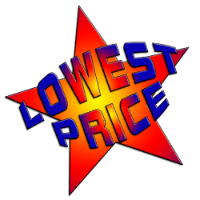Whenever I consult with a client or present my marketing master classes, I ask the questions:
- How are you competing in your current market?
- What is your competitive advantage?

I’m met with a variety of responses which can range from “I’ve no idea” to “I am the cheapest.” A very popular response is “my business offers a better quality of service.”
Whilst the respective business owners thought they had a smart answer at the time, they soon realised that they were floundering and they needed to be delivering a much stronger message.
Let’s focus on three common ways businesses often compete, across many markets and the hidden dangers behind them.
- Price
- Service
- Speed of delivery
 Selling on price
Selling on price
I mentioned earlier the response of being the cheapest. This is a high risk strategy and a game of business you need understand very well, and have the cash resources to remain in this position.
The danger with competing on price is that whilst it attracts many prospects, as soon as another business markets a cheaper price, then your customers are off. Being cheaper has a huge downside and that is customer loyalty. The reason for this is simple. As soon as another business can demonstrate they can out-compete you then competitive advantage is lost.
People in general do not have buying strategies and rely on the sales strategies of a vendor to help them. You are therefore setting the buying criteria for these people. If the best you can do is say you are the cheapest then their strategy will be to continuously look for the cheapest. They buy on this criteria alone. As I said earlier, there is no brand loyalty with this type of buyer.
There are businesses who compete on this basis but usually they are either in a niche where there is very little competition, especially locally, or there is no competition.
Selling on service
As states, this is a popular response, tagging the word “quality” into the discussion. However, this means nothing. What does service mean to you? A great service means different things to people.
To create real competitive advantage using this word, it’s important to define what this service actually means to me, the buyer. Does this mean that the goods will be dispatched and delivered to me within 24 hours? Does it mean I will be kept waiting for a maximum of 20 minutes? If you are unable to define what this means, then your competitive advantage is weak and subject to failure. A competitor could easily steal your position in the market by clearly defining their advantage, making it more attractive to a prospect.
Speed of delivery
Many years ago Domino’s Pizza achieved the number one position in the market by understanding what their customers wanted. They realised that they were serving mums who had little time to prepare food for their hungry children who had returned from school. This prompted a change in competitive positioning and rather being like every other pizza shop, they marketed based on speed of delivery. As a result they became the number one pizza shop in America for some time. Did they make the most delicious pizza? No. But they guaranteed the customer would receive their fresh pizza within 30 minutes from ordering or not pay for it. A fantastic USP (unique selling proposition).
The good news about this story is that as Domino’s created this position in the market first, competitors could not copy it without being seen as a copy which simply failed to capture the attention of the market. Can you adapt this to suit your business?
Perhaps your business competes purely on the location? Again, this could be useful but also dangerous, especially if you rely on passing traffic from pedestrians. Why is this dangerous? Town centres have habits of making changes. Even digging up the pavement can cause severe disruption which could then divert the traffic down another street and away from your location. This is all it takes to create new patterns of behaviour which may result in permanent loss of business.
Alternatively, location can be incredibly important and if parking is close by then you could be on to a winner.
To summarise, choosing how you compete needs a great deal of thought. Get it right and your business has a strong chance of being highly successful. However, if it’s wrong you are on the slippery slope and need to change it.
This article was not written to explain the numerous ways to compete or to help you change or design new competitive strategies. By explaining the dangers of certain competitive statements you are now warned that they have downsides that can literally starve your business of sales, resulting in closure. If this articles forces you to re-think your competitive position and you gain more success, then well done for taking action.
Take your time to decide what your potential customers really want and find a way to explain why they should buy from you that will appear highly attractive AND it is something you can deliver. This becomes who and what your business is really about and by living and consistently delivering it your market your business will soon gain a great reputation for all the right reasons.
[bctt tweet=”What’s your competitive advantage? Read about 3 common ways & their hidden dangers”]





